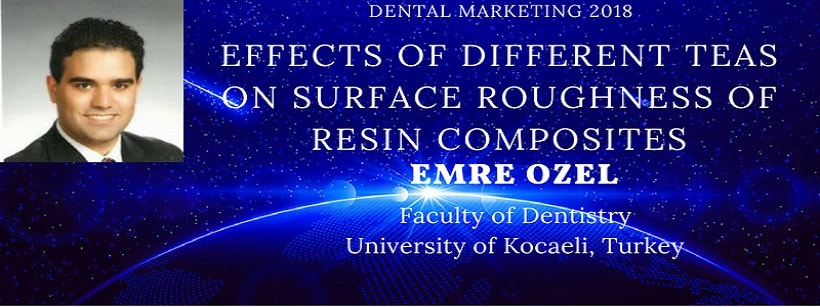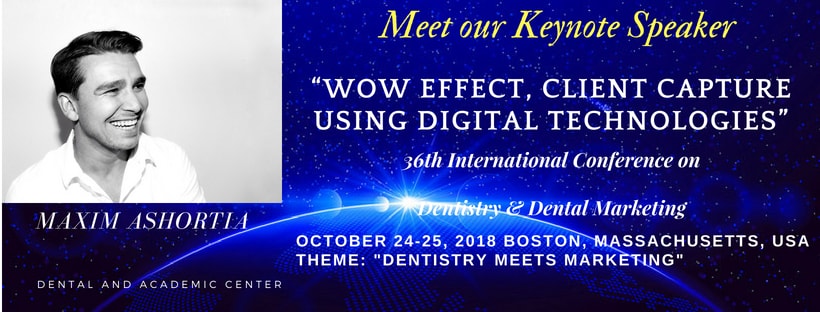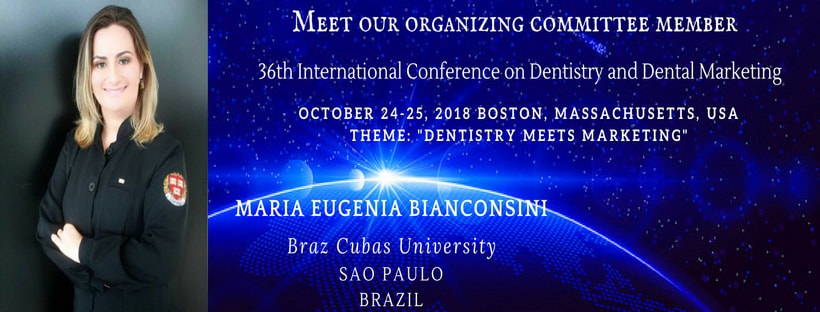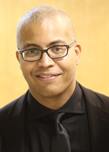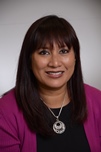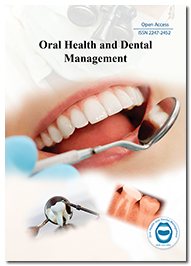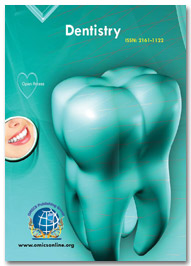Theme:
Dental Marketing 2018
Details of Dental Marketing 2018 in USA
|
Conference Name |
Place |
Date |
|
Dental Marketing 2018 |
Boston,USA |
October 24-25,2018 |
After the success of Dental Marketing-2017 in Las Vegas, Conference Series LLC Ltd invites all the participants across the globe to attend the 36th International Conference on Dentistry & Dental Marketing (Dental Marketing-2018) during October 24-25, 2018 in Boston, USA. The relative novel nature of the conference and its relevance to the current dental market makes this summit an event to look forward to for all individuals of the dental community.
The theme of the Dental Marketing-2018 is “Dentistry meets Marketing”.
The 36th International Conference on Dentistry & Dental marketing will look to improve and build on the stepping stones of it predecessor and create a platform for discussion on dental practice management and marketing besides conventional dentistry.
The nature of the conference is crucial to its purpose as dentists who attend the conference can not only contribute and share their research but also learn about how marketing influences their practices and implement and modernize.
Dental Marketing is the integration of marketing strategies in the field of dentistry to help Dental Professionals harness the full potential of their practice. It involves the use of tools and techniques of marketing to achieve a certain degree of publicity and broaden the reach of the practice and the practitioner. The conference is a rare opportunity for all individuals of the dental community to upgrade their know-how of the latest marketing strategies.
Why to attend?
Dentistry & Dental Marketing has been designed with a twofold objective in mind. The main theme of the conference is "Dentistry meets marketing” which covers a wide range of critically important sessions.
The event aims at bringing a wide range of dental professionals ranging from mainstream Prosthodontics & Orthodontics to relatively offbeat Micro dentistry, Holistic Dentistry etc and also lays a special emphasis at Educating and informing dental practitioners with the latest knowledge of Marketing strategies that can be applied to counter the undervaluation dental practices face.
To add to its promise, the venue of the event has been selected after much research to assure that the event is being held in one of the hotspots for the concerned field, therefore attendance is expected to be astounding, both in quality and quantity. The variety of prospective audience includes: figures of academic excellence, interested industrialists, Students, exhibitors and eminent faces from the world of marketing thus enabling the sponsors a unique chance to choose from a pool of outstanding scopes for expansion of their business, new project undertaking and recruitment. All these factors combined and several more make Dental Marketing-2018 a “must attend” dental conference.
A Unique Opportunity for Advertisers and Sponsors at this International event.
For sponsorship opportunities: http://dentalmarketing.conferenceseries.com/sponsors.php
1. Oral and Maxillofacial Pathology :
Oral and maxillofacial pathology (also termed oral pathology, stomatognathic disease, dental disease, or mouth disease) refers to the diseases of the mouth ("oral cavity" or "stoma"), jaws ("maxillae" or "gnath") and related structures such as salivary glands, temporomandibular joints, facial muscles and perioral skin (the skin around the mouth). The mouth is an important organ with many different functions. It is also prone to a variety of medical and dental disorders. The specialty oral and maxillofacial pathology is concerned with diagnosis and study of the causes and effects of diseases affecting the oral and maxillofacial region. It is sometimes considered to be a specialty of dentistry and pathology. Sometimes the term head and neck pathology is used instead, but this might imply that the pathologist deals with otorhinolaryngologic disorders (i.e. ear, nose and throat) in addition to maxillofacial disorders. In this role there is some overlap between the expertise of head and neck pathologists and that of endocrine pathologists.
2. Dentistry:
Dentistry is a branch of medicine that consists of the study, diagnosis, prevention, and treatment of diseases, disorders, and conditions of the oral cavity, commonly in the dentition but also the oral mucosa, and of adjacent and related structures and tissues, particularly in the maxillofacial (jaw and facial) area. Although primarily associated with teeth among the general public, the field of dentistry or dental medicine is not limited to teeth but includes other aspects of the craniofacial complex including the temporomandibular and other supporting structures. Dentistry is often also understood to subsume the now largely defunct medical specialty of stomatology (the study of the mouth and its disorders and diseases) for which reason the two terms are used interchangeably in certain regions.
3. Dental Marketing :
Marketing is key to the success of any business and dental practices are no exception. For a dental practice to grow, a single dentist should be seeing 24-50 new patients per month. And in order to attract new dental patients, a practice must offer a competitive product at competitive pricing, along with convenient quality services – all backed by a solid dental marketing plan.
4. Oral and Maxillofacial surgery :
Oral and Maxillofacial surgery (OMS or OMFS) specializes in treating many diseases, injuries and defects in the head, neck, face, jaws and the hard and soft tissues of the oral (mouth) and maxillofacial (jaws and face) region. It is an internationally recognized surgical specialty. In countries such as the UK, Australia and most of Europe, it is recognized as both a specialty of medicine and dentistry, and a dual degree in medicine and dentistry is compulsory. In other countries including the United States, India, Canada, Brazil, New Zealand, and Sweden, it is a recognized specialty of dentistry.
5. Oral and maxillofacial radiology :
Oral and maxillofacial radiology, also known as dental and maxillofacial radiology, is that specialty of dentistry concerned with performance and interpretation of diagnostic imaging used for examining the craniofacial, dental and adjacent structures. OMFR or DMFR is one of nine dental specialties recognized by the American Dental Association, Royal College of Dentists of Canada, and Royal Australasian College of Dental Surgeons. Cone Beam CT image of a post-operative orthognathic surgery. Oral and maxillofacial imaging includes cone beam CT, multislice CT, MRI, PET, ultrasound scan, dental panoramic radiology, cephalometric imaging, intra-oral imaging (e.g. Bitewing, peri-apical and occlusal radiographs) in addition to special tests like sialographs. Visible light, optical coherence tomography and tera ray imaging are examples of additional methods in use or under development. Image guidance includes haptic and robotic devices.
6. Dental Stem Cell:
Dental pulp is the soft live tissue inside a tooth. Dental pulp contains stem cells, known as Dental Pulp Stem Cells. The finest Dental Pulp Stem Cells are found in a baby teeth or milk teeth. The stem cells from the milk teeth are 'mesenchymal' type of cells i.e. cells that have the ability to generate a wide variety of cell types like chondrocytes, osteoblasts and adipocytes. Chondrocytes are cells that have the ability to generate cartilage, which can play an important role in the treatment of arthritis and joint injuries. Osteoblasts are cells that have the ability to generate bones. Adipocytes are cells that have the ability to compose adipose tissue, specialized in storing energy as fat. In essence, dental stem cells can generate solid structures of the body such as bone, new dental tissue, cartilage and muscle. New research suggests the potential (currently under experimental research) to regenerate nerves. This is being studied further for use in dentistry and medicine.
7. Obstructive Sleep Apnea Syndrome (OSA):
When you have this condition, your breath can become very shallow or you may even stop breathing -- briefly -- while you sleep. It can happen many times a night in some people. Obstructive sleep apnea happens when something partly or completely blocks your upper airway during shut-eye. That makes your diaphragm and chest muscles work harder to open the obstructed airway and pull air into the lungs. Breathing usually resumes with a loud gasp, snort, or body jerk. You may not sleep well, but you probably won't be aware that this is happening. The condition can also reduce the flow of oxygen to vital organs and cause irregular heart rhythms.
8. The Future of Dentistry: Benefits of 3D Dentistry and CBCT Machines :
One of the most important and exciting developments in dental diagnostic technology in the past decade has been the advent of 3D dental imaging. However, most people likely aren’t even aware of what 3D dental technology is- that’s how new it is! How is works?
9. Dental Marketing Trends :
A Dental Market trend is a perceived tendency of financial markets to move in a particular direction over time. These trends are classified as secular for long time frames, primary for medium time frames, and secondary for short time frames. Traders attempt to identify market trends using technical analysis, a framework which characterizes market trends as predictable price tendencies within the market when price reaches support and resistance levels, varying over time. A trend can only be determined in hindsight, since at any time prices in the future are not known.
10. Dental Marketing Strategies :
Dental Marketing strategy is a long-term, forward-looking approach to planning with the fundamental goal achieving a sustainable competitive advantage. Strategic planning involves an analysis of the company's strategic initial situation prior to the formulation, evaluation and selection of market-oriented competitive position that contributes to the company's goals and marketing objectives. Strategic Dental marketing, as a distinct field of study emerged in the 1970s, and built on strategic management that preceded it. Dental Marketing strategy highlights the role of marketing as a link between the organization and its Patients.
11. Oral Cancer :
Oral cancer, also known as mouth cancer, is a type of head and neck cancer and is any cancerous tissue growth located in the oral cavity. It may arise as a primary lesion originating in any of the tissues in the mouth, by metastasis from a distant site of origin, or by extension from a neighboring anatomic structure, such as the nasal cavity. Alternatively, the oral cancers may originate in any of the tissues of the mouth, and may be of varied histologic types: teratoma, adenocarcinoma derived from a major or minor salivary gland, lymphoma from tonsillar or other lymphoid tissue, or melanoma from the pigment-producing cells of the oral mucosa. There are several types of oral cancers, but around 90% are squamous cell carcinomas, originating in the tissues that line the mouth and lips. Oral or mouth cancer most commonly involves the tongue. It may also occur on the floor of the mouth, cheek lining, gingiva (gums), lips, or palate (roof of the mouth). Most oral cancers look very similar under the microscope and are called squamous cell carcinoma, but less commonly other types of oral cancer occur, such as Kaposi's sarcoma.
12. Public Health Dentistry :
Dental Public Health (DPH) is a non-clinical specialty of dentistry that deals with the prevention of oral disease and promotion of oral health. Dental public health is involved in the assessment of key dental health needs and coming up with effective solutions to improve the dental health of populations rather than individuals.[3]Prevention is becoming increasingly important. Dental related diseases are largely preventable and there is a growing burden on health care systems for cure. Dental public health looks beyond the role of a dental practitioner in treating dental disease, and seeks to reduce demand on health care systems by redirection of resources to priority areas. Countries around the world all face similar issues in relation to dental disease. Implementation of policies and principles vary due to available of resources. Similar to public health, an understanding of the many factors that influence health will assist the implementation of effective strategies.
13. Dental Traumatology :
Dental trauma refers to trauma (injury) to the teeth and/or periodontium (gums, periodontal ligament, alveolar bone), and nearby soft tissues such as the lips, tongue, etc. The study of dental trauma is called dental traumatology.
14. How to Create an Awesome Dental Marketing Plan :
Every small business owner tends to struggle with creating their first marketing plan. I think the main reason for this is that most business owners tend to focus on the outcome and end campaigns, while often overlooking the strategy, planning and execution phases. Unless you've gone to school for marketing or business, you probably haven't been trained to create a strong marketing plan. Doctor's that we work with here at Elevate DDS have many years of school under their belts, but not many of them studied any sort of marketing during their time in college. This is why we thought it would be a good idea to outline what a dental marketing plan should look like, from inception to campaign completion.
15. Nanotechnology Inspires Next-generation Dental Materials :
Have a cavity? Ask your dentist about filling it with a mixture of nanoparticles including silica and zirconia. These white fillings resemble teeth better than their metal alternatives and are less likely to come loose or fracture teeth. This is just the beginning argue scientists in a review of 'nanodentistry.' Next-generation dental materials incorporating nanotechnology aim to help teeth self-heal, rebuild enamel, and protect against bacterial infections.
16. Dentistry – New Technologies :
There are four major disciplines within dental technology. These are fixed prosthesis including crowns, bridges and implants; removable prosthesis, including dentures and removable partial dentures; maxillofacial prosthesis, including ocular prosthesis and craniofacial prosthesis; and orthodontics and auxiliaries, including orthodontic appliances and mouth guards. The dentist communicates with the dental technologist with prescriptions, drawings and measurements taken from the patient. The most important aspect of this is a dental impression into which the technologist flows a gypsum dental stone to create a replica of the patient’s anatomy known as a dental cast. A technologist can then use this cast for the construction of custom appliances.
17. Dental Abnormalities :
Tooth abnormalities may be categorized according to whether they have environmental or developmental causes.While environmental abnormalities may appear to have an obvious cause, there may not appear to be any known cause for some developmental abnormalities. Environmental forces may affect teeth during development, destroy tooth structure after development, discolor teeth at any stage of development, or alter the course of tooth eruption. Developmental abnormalities most commonly affect the number, size, shape, and structure of teeth.
18. Cosmetic Dentistry:
Cosmetic dentistry is generally used to refer to any dental work that improves the appearance (though not necessarily the functionality) of teeth, gums and/or bite. It primarily focuses on improvement dental aesthetics in color, position, shape, size, alignment and overall smile appearance. Many dentists refer to themselves as "cosmetic dentists" regardless of their specific education, specialty, training, and experience in this field. This has been considered unethical with a predominant objective of marketing to patients.
19. Forensic Dentistry :
Forensic dentistry or forensic odontology is the application of dental knowledge to those criminal and civil laws that are enforced by police agencies in a criminal justice system. Forensic dentists are involved in assisting investigative agencies to identify recovered human remains in addition to the identification of whole or fragmented bodies; forensic dentists may also be asked to assist in determining age, race, occupation, previous dental history and socioeconomic status of unidentified human beings. Forensic dentistry is the proper handling, examination and evaluation of dental evidence, which will be then presented in the interest of justice. The evidence that may be derived from teeth is the age (in children) and identification of the person to whom the teeth belong. This is done using dental records including radiographs, ante-mortem (prior to death) and post-mortem (after death) photographs and DNA. "Forensic odontology" is derived from Latin, meaning a forum or where legal matters are discussed.
20. Orthodontics :
Orthodontia, also called orthodontics and dentofacial orthopedics, is a specialty field of dentistry that deals primarily with malpositioned teeth and the jaws: their diagnosis, prevention and correction. An orthodontist is a specialist who has undergone special training in a dental school or college after they have graduated in dentistry.
21. Endodontics :
Endodontics (from the Greek roots endo- "inside" and odont- "tooth") is the dental specialty concerned with the study and treatment of the dental pulp. Endodontics encompasses the study and practice of the basic and clinical sciences involving the biology of the normal dental pulp. It also includes the etiology, diagnosis, prevention and treatment of diseases and injuries of the dental pulp along with associated periradicular conditions. Endodontics has evolved tremendously in the past decade and its applications have immensely improved the quality of dental treatment.
22. Periodontics :
Periodontology or periodontics (from Greek περί peri "around"; and á½€δοÏς odous "tooth", genitive á½€δÏŒντος odontos) is the specialty of dentistry that studies supporting structures of teeth, as well as diseases and conditions that affect them. The supporting tissues are known as the periodontium, which includes the gingiva (gums), alveolar bone, cementum, and the periodontal ligament. A person who practices this specialty is known as a periodontist.
23. Prosthodontics :
Prosthodontics, also known as dental prosthetics or prosthetic dentistry, is the area of dentistry that focuses on dental prostheses. It is one of nine dental specialties recognized by the American Dental Association (ADA), Royal College of Surgeons of England, Royal College of Surgeons of Edinburgh, Royal College of Surgeons of Ireland, Royal College of Surgeons of Glasgow, Royal College of Dentists of Canada, and Royal Australasian College of Dental Surgeons. The ADA defines it as "the dental specialty pertaining to the diagnosis, treatment planning, rehabilitation and maintenance of the oral function, comfort, appearance and health of patients with clinical conditions associated with missing or deficient teeth or oral and maxillofacial tissues using biocompatible substitutes.
24. Restrorative Dentistry :
Restorative dentistry is the study, diagnosis and integrated management of diseases of the teeth and their supporting structures and the rehabilitation of the dentition to functional and aesthetic requirements of the individual. Restorative dentistry encompasses the dental specialties of endodontics, periodontics and prosthodontics and its foundation is based upon how these interact in cases requiring multifaceted care. In the UK restorative dentistry is legally recognized as a specialty under EU directive, with voices from the British Society for Restorative Dentistry and the Association of Consultants & Specialists in Restorative Dentistry.
Conference Highlights
- Cosmetic Dentistry
- Forensic Dentistry
- Orthodontics
- Dentistry
- Dental Marketing
- Oral and Maxillofacial surgery
- Oral and maxillofacial radiology
- Dental Stem Cell
- The Future of Dentistry: Benefits of 3D Dentistry and CBCT Machines
- Dental Marketing Trends
- Dental Marketing Strategies
- Oral Cancer
- Public Health Dentistry
- How to Create an Awesome Dental Marketing Plan?
- Nanotechnology Inspires Next-generation Dental Materials
- Dentistry – New Technologies
- Dental Abnormalities
- Endodontics
- Periodontics
- Prosthodontics
- Restrorative Dentistry
- Oral and Maxillofacial Pathology
- Obstructive Sleep Apnea Syndrome (OSA)
- Dental Traumatology
To share your views and research, please click here to register for the Conference.
To Collaborate Scientific Professionals around the World
| Conference Date | October 24-25, 2018 | ||
| Sponsors & Exhibitors |
|
||
| Speaker Opportunity Closed | Day 1 | Day 2 | |
| Poster Opportunity Closed | Click Here to View | ||
Useful Links
Special Issues
All accepted abstracts will be published in respective Our International Journals.
Abstracts will be provided with Digital Object Identifier by


